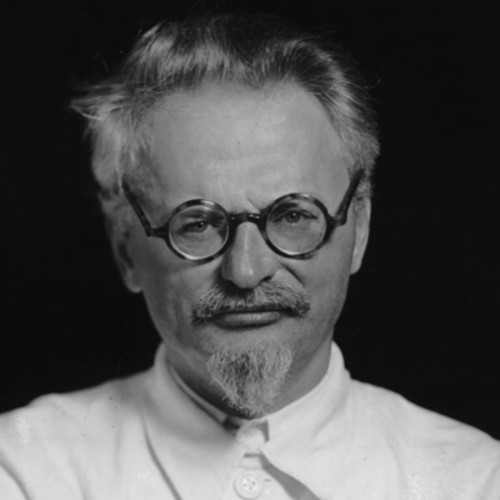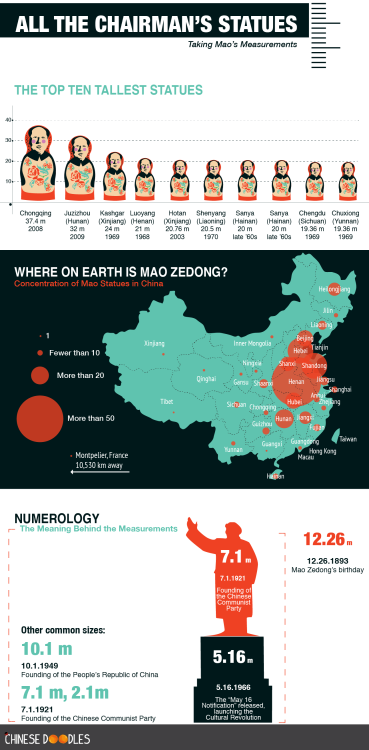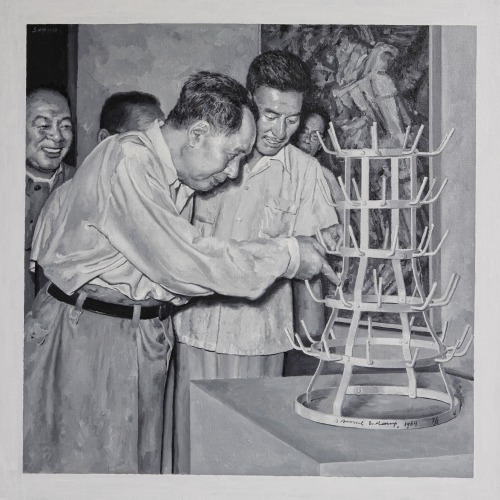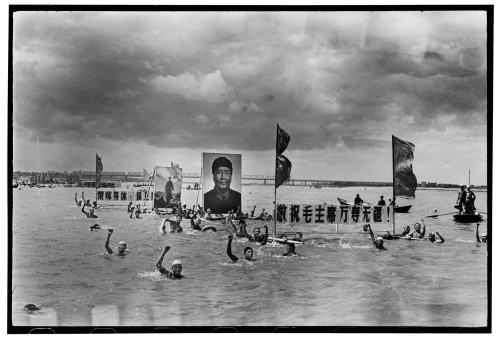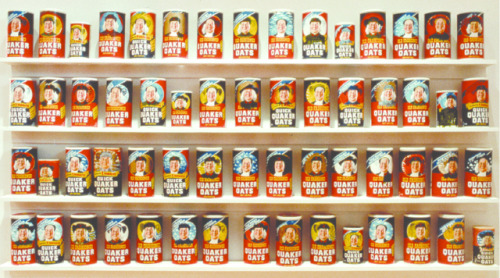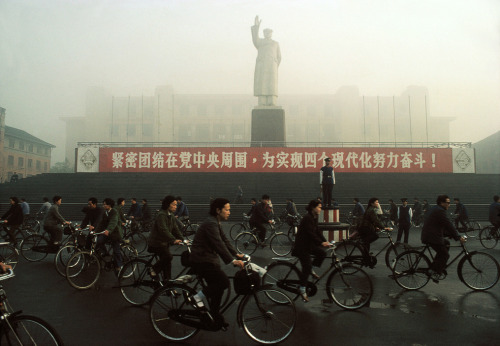#mao zedong
Hello from Tianamen Square!
In front of the Gate of Heavenly Peace, Beijing, China. June 14, 2015.
Post link
http://content.time.com/time/subscriber/article/0,33009,770539,00.html
While Trotskyism and permanent revolution are flawed ideologies that should be opposed by any rational Marxists, our comrade has a great analysis on the bread and circuses employed in a capitalist society to tranquilize the workers and masses in an industrialized society. This is in no way shape or form an advocacy of Trotskyism.
“Capital does not like the working man to think and is afraid….It has therefore adopted measures. … It has put up automats in each station and has filled them with disgusting candied gum. With an automatic movement of the hand the people extract from these automats pieces of sweetish gum, and they grind it with the automatic chewing of their jaws… . It looks like a religious rite, like some silent prayer to God-Capital.“
Haha leftist communist KFC man says bubble gum machine bad. Except, this same phenomenom can be seen within parasocial relationships practiced between the proletariat and figures such as instagram influencers, twitch streamers, youtubers, and aspects of pop culture. It is remarkable how coping mechanisms such as gaming and participation of social media can be seen as a modern kafkaesque religious ritual.
Post link
Yeah, it was absolutely true. Many colleges, Ivy League and not, had quotas for Jewish attendance. This mostly became an issue in the interwar period.* While Jews had been emigrating to the US for several hundred years, since the first settlement of what is now New York, a massive wave of Eastern European Jewish emigration began in 1881 and continued in full force until (and to an extent through) World War I. In the 1920s, this ended due to racist, eugenicist influences on Congress- draconian immigration laws were enacted in 1924 to drastically limit immigration particularly of poor and “less white” people, like Jews, Italians, and Greeks, by basing the permitted immigration on numbers from 1890, when relatively few had emigrated. However, by the 1920s, colleges felt like they were facing a different problem- second-generation advancement. Jews who had arrived since 1881 had come with little to no English and relatively little education in general, but especially given the emphasis on assimilation and the “melting pot” which their children received in schools and settlement houses, the children of immigrants were far more Americanized, and their parents pushed them toward academic success. By 1915, for example, about 40% of students at Columbia were Jewish (either immigrants or first generation Americans)- ironically due to the fact that Columbia had made it easier for them to get in as public school students by basing admissions on standardized tests.
College administrators were not happy about this, so they decided to do something about it.
Examples:
In 1922, Harvard implemented a 10% quota for Jews in order to prevent a “Jewish problem,” in the words of its president, A. Lawrence Lowell. He rationalized this by saying that he wanted to decrease potential antisemitism on campus.
Harvard also changed its admission system from an entrance exam (which favored studious Jews from the well-performing NYC public school system, who generally succeeded) to a system in which they accepted students from the top seventh of their class regardless of their score on the exam. This favored students in other parts of the country who had received lower quality education, and had the additional “benefit” of reducing the number of Jewish accepted students.
In the 1920s, Columbia basically invented the modern college application form. Why? So that they could weed out Jewish (and potentially other undesirable) applicants. Knowing that many Jews changed their names to hide their Jewishness, these forms required that past names be listed and also asked for country of origin, mother’s maiden name, and social organizations. And you know those questions about extracurriculars? Those were also invented for this purpose, as a measure of “character”- with character meaning “not Jewish.” Jews were known for being studious and “greasy,” not participating in all of the typically WASPy social concerns, and so by making “character” a requirement they were able to eliminate Jews from the pool. Nicholas Murray Butler, when discussing the more limited admission of Jews, stated that there had been no conscious effort to eliminate Jews- after evaluating the application forms, Jews were simply among “the lowest grade of applicant,” this despite the fact that so many had previously been accepted on the basis of grades.Harvard soon followed suit in using an application form, and many other colleges adopted it in the coming years.
While universities like Princeton had been interested in making a quota, it took Harvard and Columbia making the first move for them to implement one, along with colleges like Barnard, Yale, Duke, Rutgers, Adelphi, Cornell, Johns Hopkins, Northwestern, Penn State, Ohio State, Washington and Lee, the Universities of Cincinnati, Illinois, Kansas, Texas, Minnesota, Virginia, and Washington, and the Bronx campus of NYU.
Colgate University kept six Jews enrolled specifically in order to counter charges of antisemitic admissions.
Syracuse University housed Jews separately from other students and had a KKK branch on campus.
Sarah Lawrence College had a question on its application about whether applicants had been raised with “strict Sunday observance.”
-Even as late as 1945, Dartmouth retained a quota for its Jews, citing its status as a Christian college for Christian men.
- If a Jew WAS accepted to an elite university, he (they were generally not coeducational yet) could expect not to be accepted into university culture. The social clubs and fraternities which made these colleges one big boys’ club did not let Jews among their number. They were often considered to lack college spirit, be physically repulsive, not drink enough, be brown-nosers, and not participate in sports enough, as well as to raise the academic standard too high. They were also considered to be below the appropriate level of social class and standing.
-At Brown University, Jewish students were barred from fraternities, but also barred from creating their own fraternity, purportedly to prevent antisemitism.
At the US Naval Academy at Annapolis, the page with the number two ranking cadet, who happened to be Jewish, was perforated so that those who desired could remove it without defacing the volume.
Even at universities which accepted small numbers of Jews, almost no Jews would be accepted as college professors. Fewer than 100 Jews were hired as faculty throughout the country, and nearly all under protest or some kind of special circumstance, with the caveat that they didn’t usually hire Jews.
Graduate programs admitted few Jews, using as the pretext the fact that they would never be hired as university faculty.
Despite all this, Jews continued in their quests for education, becoming 9% of college students despite being 4% of the general population. They were also nearly half of the total number of college students in New York City. They generally matriculated at City College of New York (called by some the “cheder [religious school] on the hill”) or NYU’s downtown campus (nicknamed “New York Jew”). In 1920, CCNY and Hunter College (the women’s college) had 80-90% Jewish student bodies. CCNY had been the first college to create a Jewish fraternity, ZBT, which stood for Zion Bemishpat Tipadeh, or Zion Shall Be Redeemed With Judgement. Even there, there were few Jewish faculty members- for example, there were only four at CCNY. By the 1930s, there were still only 5, and CCNY was faced with charges of antisemitism in their hiring.
There were absolutely protests of this practice. There was an outcry, for example, when Columbia implemented its application form. However, for the most part, Jews preferred not to attend colleges where they would be social outcasts and often (especially those who already lived in NY) actively chose schools like CCNY/Hunter College and NYU (and initially Columbia) as they were close to home and would provide a more Jewish-friendly environment. In general, especially in the 1930s and 40s, the US was a pretty antisemitic place (I touch on this here). For example, in a poll in the 1940s, 45% of college students said they would not want to be roommates with a Jew. The end of the practice of Jewish quotas wasn’t so much due to outcry as due to an internal examination of antisemitism in the US and the decline of the phenomenon in the postwar years. (The Civil Rights Act didn’t exist til 1964, so the practice wasn’t illegal.)
*That’s not to say there was no discrimination against Jews in colleges before this- many prominent Jews of the early 20th century, such as Oscar Straus and Bernard Baruch, later noted the difficulties they faced as Jews in university.
This 1970s Black Panther news paper shows Kim Il Sung, Ho Chi Minh, and Mao Zedong, honored for their work against imperialism and showing respect towards african americans. When the liberal white Americans were indifferent to the oppression of the african americans, the comrades in Asia were willing to fund the black panther party to liberate the colonized proletariat.
Post link
The US invaded Korea first by setting up a collaborationist government against the popular will of the Korean people that forcibly kept alive the horrors, tactics, and even the command of the Japanese occupation. Compare this to North Korea, which not only was given free reign by the USSR to organize their own councils and organization, but which also used land reform and state planning to end landlordism and almost quadruple industry within a few years. Had almost every building in city not been completely bombed and millions murdered, the DPRK would be at an incredible level of development today. It is also important to remember that 20% of the North Korean population were slain by the imperialist lapdogs and that most infrastructure and living areas were firebombed to ashes. It is hard for the imperialist lapdogs such as MacArthur and those who believe in western propaganda to empathize with the North Korean model of democratic centralism, when the possibility of nuking the North Korean people were considered by the US authorities all in the name of neoliberal imperialism. Liberals will praise the United States for devising security laws such as the PATRIOT Act while berating North Korea for its democratic centralism after facing brutal oppression from the imperialist Japanese and the exploitaion by the imperialist Americans.
TLDR: Asians are seen as subhumans by white liberal Americans. They nuked Japan’s civilians. Twice. Still justify both bombings to this day. They wanted to nuke Korea’s civilians. They wanted to nuke Vietnam’s civilians. And people wonder why China is so “aggressive” about protecting itself? Maybe they’ve seen a pattern in history? When will the abhorrent Western imperialism and chauvinism end?
Post link
Stalin’s philosophy on International Communism differed from Trotsky’s, but it was imperative to build socialism in one country to improve the material needs for international socialism.
Post link
Respecting women is revolutionary

photos of ChushiGangdruk, Tibet’s volunteer guerilla army in 1959. They were made up of young males from Amdo and Kham (eastern Tibet) regions that border China.
initially, the US State Department refused to support Chushi Gangdruk, and they were forced to organize their own army and buy their weapons with their own money as well as meager donations from farmers sympathetic to the liberation struggle. After they formed, the CIA provided training and weapons to the troops for a short period, and Taiwan under Chiang Kai-shek funded them temporarily.
Chushi Gangdruk disbanded in 1974, effectively ending the Tibetan liberation movement, after Richard Nixon’s famous olive branch to Mao in 1973 that revived Sino-American relations, thus cutting all funding for the Tibetan freedom cause.
Post link

Ever wondered how the Quotations from Chairman Mao started as an internal military handbook and became a blockbuster advice guide with total copies in print rivaling the Bible?
Our curiosity got the better of us during the China National Day (October 1st) Golden Week, so we decided to investigate the phenomenon of Mao’s Little Red Book as a product marketing case study and conduct an open experiment (acknowledging the imperfect nature of such comparisons) following the lifecycle of the “Mao brand” from inception to its peak of popularity. Welcoming your input, we offer this template as a starting point:
1931 / Brand “Soft Launch”
Mao Zedong was proclaimed Chairman of the Council of People’s Commissars of the Soviet Republic of China, and later, Chairman of the Politburo, Chairman of the Military Commission, Chairman of the Communist Party, and so on.
1934 / Brand Enhancement
Mao consolidated power and built key alliances in the crucible of the Long March. The subsequent victories over the Japanese and the Nationalists added to his aura of invincibility, as a soldier immune to death and injury.
Continue reading
Shi Xinning - Ο Πρόεδρος Μάο περιεργάζεται έργο του Marcel Duchamp [πρόκειται για το έργο ‘‘Porte-bouteilles’’ / https://nyti.ms/3yrwglx]
Post link
Considered one of the most powerful women in China’s history, Jiang Qing (19 March 1914 – 14 May 1991) began acting at the age of 18. Using the stage name Lán Píng, she appeared in numerous films and plays and married the actor/director Tang Na in 1935. A public scandal erupted in 1937 when Jiang moved in with Zhang Min, a married man who led a theatrical troupe. Tang Na attempted suicide twice before the couple’s divorce in 1937.
In August 1938, she became secretary of the archives of the Communist party’s Military Commission, placing her in close proximity to 44-year-old Mao Zedong. Mao was divorcing his wife, and he and the 24-year-old Jiang soon began living together and by late 1938 she announced that she was pregnant.
In April 1969, Jiang became the first woman ever elected to the 21-member Politbureau, and as Mao’s health deteriorated in the 1970s, she exerted more control. When Mao died in September 1976, Jiang Qing and 3 others (the Gang of Four) tried to maintain control over China and on 5 October formally announced that Jiang should be named party chair. The Gang of Four was arrested the next day. The Chinese media began referring to Jiang as the “White-boned Demon.”
The Gang of Four were put on trial and convicted. Jiang received a suspended death sentence. She was released from prison in 1988 and placed under house arrest. Diagnosed with throat cancer in early 1991, the 77-year-old Jiang Qing hanged herself in her hospital room on 14 May 1991. Her obituary in the Chinese media made no mention of her political status, or that she was ever married to Chairman Mao.
Post link
Quaker Oats Mao. Zhang Hongtu (张宏图). 1987.
Zhang Hongtu (张宏图) is a Chinese artist who graduated from the Central Academy of Fine Arts. In his art, Zhang often combines eastern and western ideas, styles, and techniques in his art. Zhang left China for the United States in the early 1980s and currently resides in New York.
InQuaker Oats Mao, Zhang criticizes the ubiquity and power of Chairman Mao Zedong’s image in China by imposing iconic features of Mao, such as hair and clothing, onto the Quaker Oats man. This pop art of Zhang’s was not well received by neither China, where Mao’s image was almost sacred, nor the Quaker Oats company, which was anti-Communist.
Follow sinθ magazine for more daily posts about Sino arts and culture.
Post link
“Synthesis is just the completed development of one side, the elimination of one side, and the resolution of the contradiction.”
Mao to Ai Siqi, 1964
China, Sichuan Chengdu, 1980
from “China from Mao to Modernity” photo series
Photographed by Bruno Barbey
Post link




